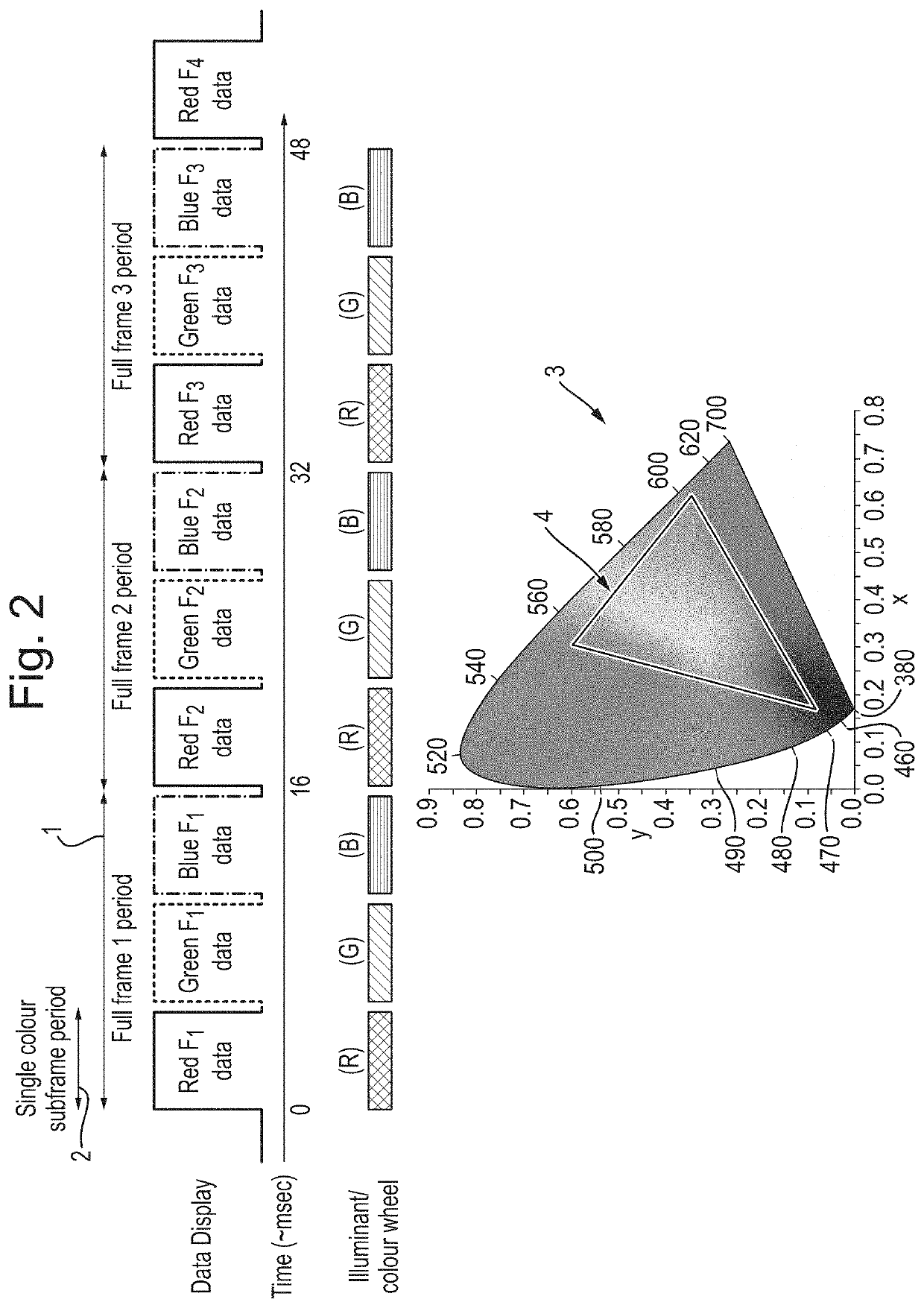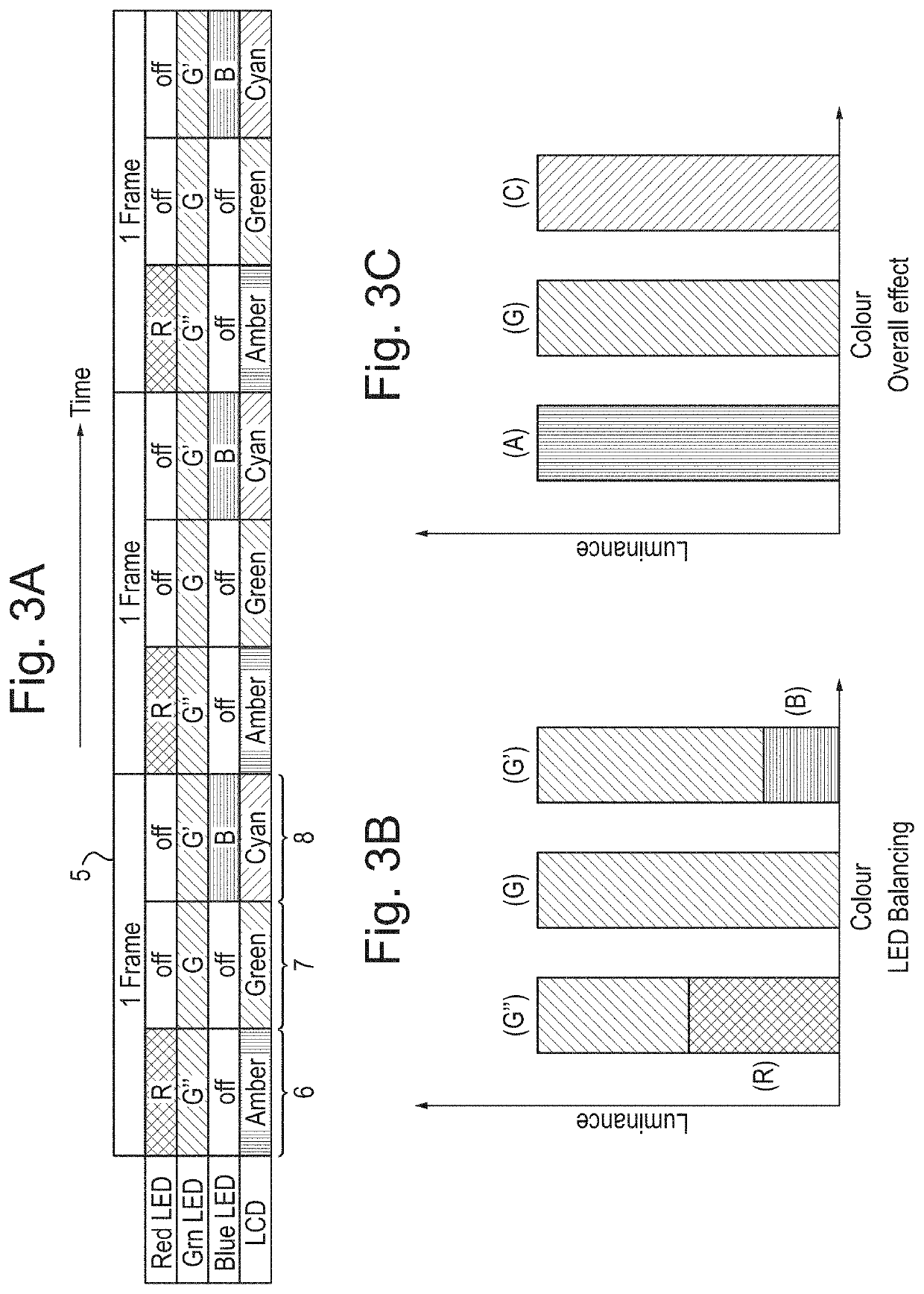Displays
a colour display and projection technology, applied in the field of projection colour display systems, can solve the problems of so-called ‘colour break-up’, the risk that some symbols may be much more difficult to distinguish than others, and the difficulty of identifying symbols,
- Summary
- Abstract
- Description
- Claims
- Application Information
AI Technical Summary
Benefits of technology
Problems solved by technology
Method used
Image
Examples
Embodiment Construction
[0053]In the drawings, like items are assigned like reference symbols.
[0054]FIG. 1A schematically illustrates a conventional field-sequential colour projection display timing control arrangement for use in displaying colour video by projection. A combination of three component images (2) each representing a respective one of three different component colours (red=R; green=G; blue=B) of a video image frame are displayed sequentially each within a respective sub-frame portion of the same one image frame display period (1). By sequentially displaying the red, green and blue image content at a sufficiently high frequency, the human eye integrates the colour content together to form a colour image within each frame period.
[0055]In particular, a red LED light source is arranged to illuminate and LCD projection display panel during a 1st sub-frame portion of a frame period within which the LCD display panel is controlled to draw or present the red component image of the video image frame. ...
PUM
 Login to View More
Login to View More Abstract
Description
Claims
Application Information
 Login to View More
Login to View More - R&D
- Intellectual Property
- Life Sciences
- Materials
- Tech Scout
- Unparalleled Data Quality
- Higher Quality Content
- 60% Fewer Hallucinations
Browse by: Latest US Patents, China's latest patents, Technical Efficacy Thesaurus, Application Domain, Technology Topic, Popular Technical Reports.
© 2025 PatSnap. All rights reserved.Legal|Privacy policy|Modern Slavery Act Transparency Statement|Sitemap|About US| Contact US: help@patsnap.com



